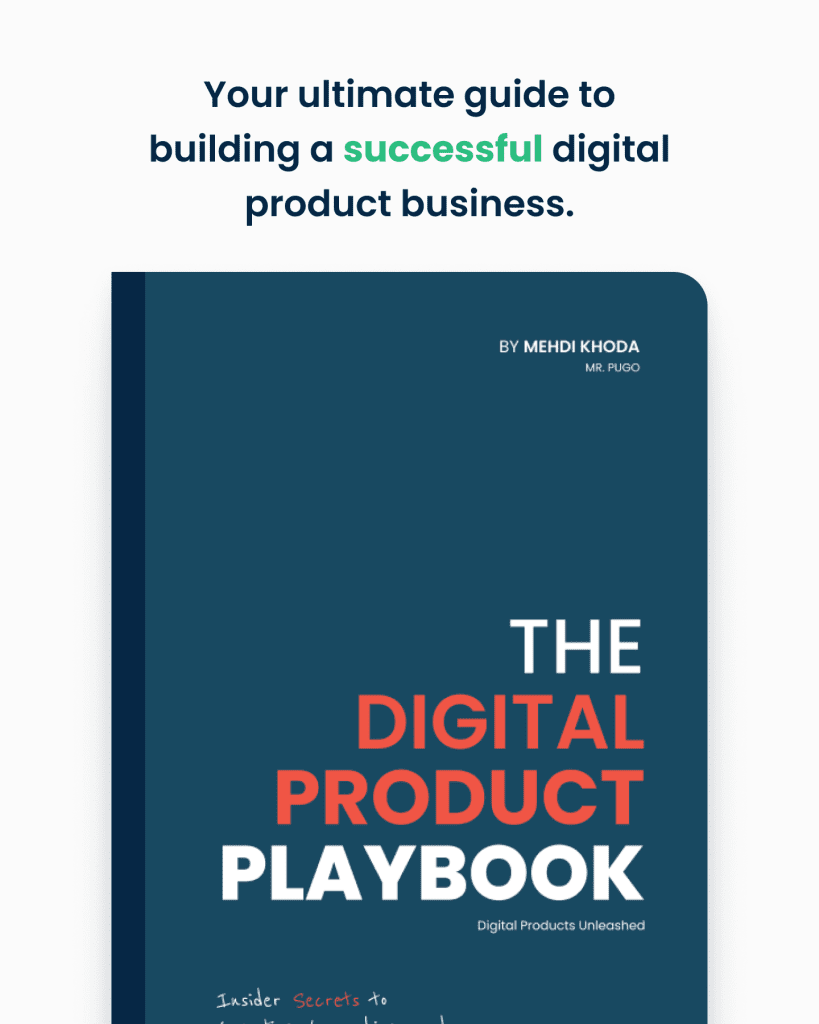The Ultimate Guide: How to Make Money Online

Make Money Online. Welcome to PugoStudio! In this comprehensive guide, we will delve into the world of online selling and explore effective strategies to make money online. Whether you’re a seasoned entrepreneur or a budding online seller, this post will provide valuable insights and actionable tips to help you succeed. So, let’s dive in and unlock the secrets to online selling success!
In today’s digital era, the internet has transformed the way we live, work, and connect with others. It has opened up unprecedented opportunities for individuals to break free from traditional constraints and create thriving businesses in the online realm. Whether you’re looking to earn some extra income or dreaming of building a full-fledged online empire, the possibilities are limited only by your imagination and determination.
It’s important to recognize that building a successful online business takes time, effort, and persistence. Rome wasn’t built in a day, and neither will your online empire. However, armed with the right knowledge and strategies, coupled with your determination and commitment, you can overcome obstacles and achieve remarkable success.
Throughout this guide, we will emphasize the importance of honing your skills, understanding your target audience, leveraging digital marketing techniques, and continually adapting to the dynamic online landscape. With the power of the internet at your fingertips, you have the ability to reach a global audience, connect with like-minded individuals, and create a sustainable income stream.
Whether you’re a digital native or just starting to explore the online world, this guide is designed to provide you with the inspiration and guidance you need to thrive. So, get ready to embark on an exciting journey of discovery, innovation, and financial freedom.
Are you ready to unleash your potential and seize the abundant opportunities that await you in the digital realm? Let’s dive into the ultimate guide on how to make money online and embark on an extraordinary adventure that could change your life forever.
1: Getting Started with Online Selling

1.1 Choosing the Right Platform:
In the vast landscape of online selling, choosing the right platform is crucial to your success. With numerous options available, such as e-commerce websites, marketplaces, and social media platforms, it’s essential to evaluate each one based on your goals and target audience. Here are some factors to consider when selecting the perfect platform:
Ease of Use
Look for platforms that offer a user-friendly interface and intuitive navigation. This ensures a smooth selling experience and saves you time and effort in managing your online store.
Cost: Assess the pricing structure of each platform, including setup fees, transaction fees, and monthly subscriptions. Consider your budget and the value provided by each platform before making a decision.
Audience Reach
Research the platform’s user base and determine if it aligns with your target audience. Consider factors such as demographic profiles, geographic reach, and niche markets to find the platform that can effectively connect you with potential buyers.
Available Features
Explore the features and functionalities offered by each platform. Look for tools that support inventory management, order tracking, analytics, and marketing capabilities. The right features can streamline your selling process and enhance your overall performance.
1.2 Setting Up Your Online Store:
Once you’ve chosen the platform that suits your needs, it’s time to set up your online store. Here are key steps to follow for creating an appealing online store that reflects your brand identity:
Brand Identity
Before diving into the design elements, define your brand identity. Understand your target audience, unique selling propositions, and brand personality. This will help you create a cohesive and memorable brand image.
Design and Layout
Choose a visually appealing theme or template that resonates with your brand. Customize the colors, fonts, and layout to create a professional and cohesive look. Ensure that the design is responsive and optimized for mobile devices, as a growing number of buyers shop using their smartphones.
Product Listings
Invest time in optimizing your product listings. Use high-quality product images that showcase your products from different angles and provide accurate representations. Craft compelling and detailed product descriptions that highlight the features, benefits, and unique selling points. Incorporate relevant keywords naturally to improve search visibility.
Navigation and User Experience
Create a seamless browsing experience for your customers. Organize your product categories logically and make it easy for visitors to find what they’re looking for. Implement intuitive navigation menus and search functionality to enhance usability.
Payment and Security
Select a secure payment gateway that instills trust in your customers. Ensure that your platform supports popular payment methods and provides robust security measures to protect sensitive customer information.
Remember, setting up your online store is just the beginning. Continuously monitor and optimize your store based on customer feedback and market trends. By choosing the right platform and creating an appealing store, you’ll lay a solid foundation for your online selling journey.
1.3 Understanding Your Target Audience:
To succeed in online selling, it’s crucial to understand your target audience. By conducting thorough market research, you can gain valuable insights into their preferences, needs, and pain points. This knowledge allows you to tailor your product offerings and marketing strategies to effectively engage and connect with your target audience. Here are some steps to help you understand your audience better:
Market Research
Start by conducting comprehensive market research to gather data about your potential customers. Utilize tools like surveys, interviews, and online analytics to collect information about their demographics, interests, shopping habits, and motivations. This data will serve as the foundation for understanding your target audience.
Preferences and Needs
Analyze the research findings to identify patterns and trends. Look for common preferences, needs, and desires among your target audience. Determine what drives their purchasing decisions and the specific benefits they seek from products in your niche. This understanding will enable you to align your offerings with their expectations.
Segmentation
Consider segmenting your audience into distinct groups based on shared characteristics or behaviors. This allows you to create personalized marketing messages and product recommendations that resonate with each segment. For example, you might have different segments based on age, location, or interests.
Buyer Personas
Develop detailed buyer personas that represent your ideal customers. These personas should capture key information such as demographics, goals, challenges, and purchasing behaviors. Use these personas as reference points when making decisions about product development, marketing campaigns, and customer engagement strategies.
Tailored Offerings
Based on your understanding of your target audience, customize your product offerings to meet their specific needs. Consider factors such as product features, pricing, packaging, and branding. By aligning your products with what your audience desires, you increase the chances of attracting and converting potential buyers.
Effective Communication
Craft marketing messages and content that speak directly to your target audience. Use language, imagery, and storytelling techniques that resonate with their values and aspirations. Choose the right channels to reach them, whether it’s through social media, email marketing, content marketing, or influencer collaborations.
Continuous Feedback
Encourage feedback from your customers to gain further insights into their experiences and expectations. Monitor customer reviews, conduct surveys, and engage in conversations on social media to understand their evolving needs. Use this feedback to refine your offerings and improve your overall customer experience.
Remember, understanding your target audience is an ongoing process. Regularly reassess their preferences and needs to stay relevant in a dynamic online marketplace. By tailoring your product offerings and marketing strategies to effectively engage your audience, you’ll build strong connections and drive success in your online selling endeavors.
2: Building a Strong Online Presence

2.1 Effective Product Photography:
In the world of online selling, visual appeal is everything. High-quality product photography plays a vital role in capturing the attention of potential customers and enticing them to make a purchase. Follow these tips to create visually appealing product photos:
Equipment and Lighting
Invest in a good camera or smartphone with a high-resolution camera. Ensure that your products are well-lit using natural light or artificial lighting setups. Experiment with different angles and compositions to find the most flattering shots.
Composition and Styling
Arrange your products in an aesthetically pleasing manner. Consider using props or creating lifestyle setups that showcase your products in real-world scenarios. Pay attention to details such as color coordination, background choices, and product positioning.
Product Details
Capture close-up shots that highlight the unique features and textures of your products. Customers appreciate being able to see the details before making a purchase. Show multiple angles to provide a comprehensive view.
Consistency
Maintain consistency in your product photography across your entire online store. This creates a cohesive and professional look, helping to establish your brand identity and build trust with your audience.
Optimization
Resize and optimize your product images for different online platforms to ensure they load quickly and look their best. Compress the images without compromising quality to enhance website performance and user experience.
2.2 Crafting Compelling Product Descriptions:
While visuals are essential, persuasive product descriptions play a crucial role in convincing customers to buy. Here are some tips for crafting compelling product descriptions:
Know Your Audience
Understand the needs and desires of your target audience. Highlight the key features and benefits of your products that are most relevant to them. Use language and tone that resonate with their preferences.
Unique Selling Points
Identify the unique selling points of your products and emphasize them in your descriptions. What makes your products stand out from the competition? Highlight these aspects to capture the interest of potential customers.
Tell a Story
Use storytelling techniques to create an emotional connection with your audience. Describe how your products can enhance their lives or solve their problems. Paint a picture with words that engages their imagination and compels them to envision owning the product.
Be Descriptive
Provide specific details about your products such as dimensions, materials, colors, and functionality. Help customers visualize the product in their minds and make an informed purchasing decision.
Use Persuasive Language
Use persuasive language and power words to create a sense of urgency or exclusivity. Incorporate customer testimonials or reviews to build trust and credibility.
Formatting and Readability
Use bullet points, subheadings, and paragraphs to break up the text and improve readability. Make sure your descriptions are scannable and easy to digest.
2.3 Leveraging Social Media:
Social media platforms offer vast opportunities to expand your reach and engage with potential customers. Here’s how you can leverage social media to promote your products effectively:
Platform Selection
Identify the social media platforms that align with your target audience and business goals. Facebook, Instagram, Twitter, Pinterest, and LinkedIn are popular options. Each platform has its own strengths, so choose the ones that best suit your brand and target audience.
Consistent Branding
Maintain consistent branding across your social media profiles. Use the same logo, color scheme, and tone of voice to create a cohesive brand identity.
Content Strategy
Develop a solid social media content strategy. Create a mix of promotional posts, engaging visuals, informative content, and behind-the-scenes glimpses. Experiment with different formats like images, videos, stories, and live streams to keep your audience engaged.
Engagement and Interaction
Actively engage with your audience by responding to comments, messages, and mentions. Encourage user-generated content and foster a sense of community by running contests or featuring customer stories. Show genuine interest in your audience’s feedback and incorporate it into your business strategies.
Influencer Collaborations
Consider collaborating with influencers or micro-influencers in your niche. Influencer marketing can help you reach a wider audience and build trust through the influencer’s endorsement.
Paid Advertising
Utilize social media advertising features to target specific demographics and maximize your reach. Experiment with different ad formats and monitor the performance to optimize your campaigns.
Analytics and Insights
Use social media analytics tools to track the performance of your posts, identify trends, and understand what content resonates best with your audience. Use these insights to refine your social media strategy and improve engagement.
Building a strong online presence requires effective product photography, compelling product descriptions, and a strategic approach to social media. By investing time and effort into these aspects, you can captivate your audience, differentiate your brand, and drive success in the online selling landscape.
3: Marketing and Promoting Your Online Store

3.1 Search Engine Optimization (SEO):
Search Engine Optimization (SEO) is crucial for improving your website’s visibility in search engine results and driving organic traffic. By implementing SEO best practices, you can attract more potential customers to your online store. Here’s how you can optimize your website for better search engine rankings:
Keyword Research
Conduct thorough keyword research to identify relevant keywords and phrases that your target audience uses when searching for products or services similar to yours. Use tools like Google Keyword Planner or SEMrush to find popular keywords with moderate competition.
On-Page Optimization
Optimize your website’s content, meta tags, headings, and URLs with your target keywords. Ensure that your website is well-structured and easy to navigate for both users and search engines. Include keyword-rich product descriptions and informative content that adds value to your audience.
Quality Content Creation
Create high-quality and unique content that aligns with your target audience’s interests and needs. Develop a blog section on your website and regularly publish articles, guides, or tutorials related to your products or industry. This not only helps in SEO but also establishes your brand as an authority and encourages repeat visits.
Link Building
Build quality backlinks to your website from reputable sources. Reach out to relevant blogs, influencers, or industry websites to request guest posting opportunities or collaborations. High-quality backlinks help improve your website’s authority and visibility in search engine rankings.
Mobile Optimization
Ensure that your website is mobile-friendly and responsive. With the increasing number of users accessing the internet through mobile devices, having a mobile-optimized website is crucial for better rankings and user experience.
3.2 Content Marketing:
Content marketing is a powerful strategy for attracting and engaging your target audience. By creating valuable and relevant content, you can establish yourself as an authority in your niche and build trust with potential customers. Here are some content marketing tips for promoting your online store:
Blogging
Develop a blog section on your website and regularly publish informative and engaging blog posts. Address common pain points, share tips and tricks, or provide industry insights. Optimize your blog posts for relevant keywords to improve search engine visibility.
Video Marketing
Create videos that showcase your products, provide tutorials, or share customer success stories. Platforms like YouTube and social media channels are great for sharing video content. Optimize your videos with relevant titles, descriptions, and tags to increase visibility.
Social Media Content
Use social media platforms to share engaging content related to your products or industry. Create visually appealing images, infographics, or videos that resonate with your audience. Encourage sharing and user-generated content to increase brand awareness.
Collaborate with Influencers
Partner with influencers or micro-influencers in your niche to create sponsored content or product reviews. Influencers have loyal followers who trust their recommendations, and collaborating with them can expand your reach and drive sales.
Guest Posting
Write guest posts for popular blogs or publications in your industry. This allows you to reach a wider audience and build credibility as an expert in your field. Include links back to your online store to drive traffic.
3.3 Email Marketing:
Email marketing is an effective strategy for nurturing relationships with potential customers, driving conversions, and fostering customer loyalty. Here’s how you can leverage email marketing to promote your online store:
Building an Email List
Offer incentives such as exclusive discounts, free guides, or access to premium content in exchange for visitors’ email addresses. Use lead magnets or opt-in forms on your website to capture email addresses.
Segmentation and Personalization
Divide your email list into segments based on factors like demographics, purchase history, or interests. Personalize your email campaigns by addressing recipients by name and tailoring the content to their specific needs and preferences.
Automated Email Campaigns
Set up automated email campaigns to engage with subscribers at different stages of the customer journey. Welcome new subscribers, send abandoned cart reminders, recommend personalized product suggestions, or send follow-up emails after purchases.
Exclusive Offers and Promotions
Use email marketing to provide your subscribers with exclusive offers, discounts, or early access to new products. Make them feel valued and create a sense of urgency to drive conversions.
Engaging and Relevant Content
Create engaging and informative content in your emails, such as product updates, industry news, or helpful tips. Add value to your subscribers’ inbox and maintain a consistent email schedule to stay top-of-mind.
Monitoring and Analytics
Track the performance of your email campaigns using analytics tools. Monitor open rates, click-through rates, and conversions to understand what resonates best with your audience. Use these insights to optimize your future email marketing efforts.
By implementing effective SEO practices, leveraging content marketing strategies, and utilizing email marketing campaigns, you can effectively market and promote your online store, driving traffic, engagement, and conversions. These techniques will help you reach a wider audience, establish your brand’s authority, and increase your online sales.
4: Fulfillment and Customer Service

4.1 Order Fulfillment:
Order fulfillment is a critical aspect of running an online store. It involves the process of receiving, processing, and delivering customer orders efficiently. By understanding different fulfillment methods and streamlining your processes, you can ensure prompt and reliable delivery to your customers. Here’s how you can optimize your order fulfillment:
Choosing the Right Fulfillment Method
Evaluate different fulfillment methods, such as dropshipping, in-house fulfillment, or partnering with a fulfillment center. Consider factors like cost, scalability, inventory management, and customer expectations. Choose the method that aligns with your business model and ensures timely delivery.
Inventory Management
Implement a robust inventory management system to track your stock levels accurately. Use inventory management software or platforms to automate inventory updates, set up low-stock alerts, and streamline the reordering process. This helps avoid stockouts and delays in fulfilling customer orders.
Efficient Order Processing
Establish streamlined processes for order processing. This includes receiving and verifying orders, picking and packing items accurately, and preparing shipments for delivery. Utilize barcode scanners, packing slips, and shipping labels to minimize errors and expedite the process.
Shipping and Delivery Optimization
Choose reliable shipping carriers that offer competitive rates and reliable service. Negotiate shipping rates based on your shipping volume and explore options like flat-rate shipping or free shipping thresholds to attract customers. Offer tracking numbers to customers so they can monitor the progress of their shipments.
4.2 Exceptional Customer Service:
Providing exceptional customer service is crucial for building trust, loyalty, and positive brand reputation. Here are some strategies to prioritize customer satisfaction and create a positive experience:
Prompt and Responsive Support
Respond to customer inquiries, queries, and concerns in a timely manner. Offer multiple channels for customer support, such as email, live chat, or phone, and ensure that customer service representatives are well-trained and knowledgeable about your products.
Issue Resolution
Address customer issues promptly and efficiently. Empower your customer service team to handle and resolve problems effectively. Implement a ticketing system or CRM software to track and manage customer inquiries, ensuring no issue falls through the cracks.
Proactive Communication
Keep your customers informed about their orders, shipping updates, and any potential delays or issues. Proactively communicate with customers to manage expectations and provide a transparent and positive experience.
Customer Reviews and Testimonials
Encourage customers to leave reviews and testimonials about their experience with your products and customer service. Display these reviews on your website or social media platforms to build trust and credibility. Respond to both positive and negative reviews to show that you value customer feedback.
Continuous Improvement
Regularly assess your customer service processes and identify areas for improvement. Gather feedback from customers through surveys or feedback forms to understand their pain points and expectations. Use this feedback to make necessary adjustments and enhance the overall customer experience.
By prioritizing order fulfillment and providing exceptional customer service, you can ensure that your customers receive their orders on time and have a positive experience with your brand. These efforts contribute to building customer loyalty, fostering positive word-of-mouth, and establishing your online store as a trusted and reliable destination for shoppers.
5: Scaling Your Online Business

5.1 Analyzing Performance Metrics:
To scale your online business effectively, it’s essential to track and analyze key performance metrics. By monitoring performance indicators and leveraging analytics tools, you can gain valuable insights into customer behavior, sales trends, and the effectiveness of your marketing efforts. Here’s how you can analyze performance metrics to drive growth:
Identify Key Performance Indicators (KPIs)
Determine the most relevant KPIs for your business, such as conversion rate, average order value, customer acquisition cost, customer lifetime value, and website traffic. These metrics provide a snapshot of your business’s health and help you understand where improvements can be made.
Utilize Analytics Tools
Implement robust analytics tools like Google Analytics, Adobe Analytics, or other e-commerce analytics platforms to collect and analyze data. These tools offer valuable insights into customer demographics, purchasing patterns, popular products, and traffic sources. Leverage these insights to make data-driven decisions and optimize your strategies.
Monitor Sales and Revenue Trends
Analyze your sales data to identify trends and patterns. Look for opportunities to increase revenue by understanding which products or categories perform well and which may need improvement. Identify peak sales periods, seasonal trends, and emerging customer preferences to adjust your product offerings and marketing strategies accordingly.
Evaluate Marketing Effectiveness
Assess the performance of your marketing campaigns by tracking metrics like click-through rates, conversion rates, and return on ad spend (ROAS). Identify which channels and campaigns drive the highest engagement and conversions. Use this information to allocate your marketing budget effectively and optimize your promotional efforts.
Customer Behavior Analysis
Analyze customer behavior on your website, such as browsing patterns, add-to-cart rates, and cart abandonment. Identify potential pain points or bottlenecks in the customer journey and make necessary improvements to enhance the user experience. Implement strategies like personalized product recommendations or targeted email marketing based on customer preferences and browsing history.
5.2 Expanding Your Product Range:
Diversifying your product range is a key strategy for scaling your online business. By offering a wider selection of products based on market demand and customer preferences, you can attract new customers and increase sales. Here’s how you can expand your product range effectively:
Market Research
Conduct thorough market research to identify emerging trends, customer preferences, and gaps in the market. Analyze competitor offerings and customer feedback to understand potential opportunities for expansion. Consider customer surveys, social media listening, and industry reports to gain insights into evolving customer needs.
Product Validation
Before introducing new products, validate their demand and viability. Conduct market tests, run pilot programs, or gauge interest through pre-orders or crowdfunding campaigns. This validation process helps minimize risks and ensures that you invest resources in products with market potential.
Supplier and Inventory Management
Identify reliable suppliers or manufacturers for your expanded product range. Ensure they can meet your quality standards, provide competitive pricing, and maintain consistent inventory availability. Streamline your inventory management processes to accommodate the increased product range effectively.
Product Launch and Marketing
Develop a strategic plan for launching new products. Create compelling product descriptions, high-quality images, and engaging marketing materials to showcase the benefits and features of the new products. Leverage your existing customer base, social media channels, and email marketing to generate buzz and drive sales.
Monitor Performance
Continuously monitor the performance of your new products. Track sales, customer feedback, and reviews to assess their success. Analyze sales data to identify top-performing products and make data-driven decisions about future expansions or modifications to your product range.
By analyzing performance metrics and expanding your product range strategically, you can scale your online business effectively. Continuously assess customer preferences, stay informed about market trends, and adapt your strategies accordingly. Remember that scaling requires ongoing effort, flexibility, and a customer-centric approach to ensure long-term success.
6: Exploring Additional Ways to Make Money Online

6.1 Affiliate Marketing:
Affiliate marketing is a popular method to earn commissions by promoting other people’s products or services. As an affiliate marketer, you act as a middleman, connecting potential buyers with relevant products or services. Here’s how you can get started with affiliate marketing:
Choose the Right Affiliate Programs
Research and select affiliate programs that align with your target audience and niche. Look for reputable programs that offer attractive commission rates, high-quality products, and reliable affiliate support. Consider factors such as product relevance, commission structure, and affiliate tracking tools.
Effective Marketing Strategies
Develop a comprehensive marketing strategy to promote your affiliate products. Utilize various channels such as your website or blog, social media platforms, email marketing, and content marketing to reach your audience. Create engaging content that highlights the benefits of the products and includes your affiliate links.
Build Trust and Credibility
Establish trust with your audience by providing honest and unbiased recommendations. Focus on promoting products or services that you genuinely believe in and have personally used or thoroughly researched. Transparency and authenticity are key to building long-term relationships with your audience.
Track and Optimize
Monitor the performance of your affiliate marketing efforts by tracking key metrics such as click-through rates, conversions, and revenue. Use analytics tools and affiliate tracking software to gain insights into the effectiveness of your campaigns. Optimize your strategies based on the data collected to maximize your affiliate earnings.
6.2 Freelancing:
Freelancing provides an opportunity to monetize your skills and expertise by offering services in your area of specialization. Whether you’re a writer, designer, developer, marketer, or consultant, freelancing platforms offer a gateway to connect with clients and build a solid portfolio. Here’s how you can embark on a successful freelancing career:
Define Your Services
Determine the services you will offer as a freelancer. Identify your strengths, skills, and expertise that are in demand in the market. Clearly articulate your offerings and create a portfolio that showcases your work.
Freelancing Platforms
Sign up for reputable freelancing platforms like Upwork, Freelancer, Fiverr, or specialized platforms in your industry. Create a compelling profile that highlights your experience, skills, and portfolio. Leverage the platform’s features, such as bidding on projects, sending proposals, and participating in relevant communities, to find clients and secure projects.
Provide Exceptional Service
Deliver high-quality work and provide exceptional customer service to your clients. Communicate effectively, meet deadlines, and exceed client expectations. Positive client feedback and testimonials will help you build a strong reputation and attract more clients.
Networking and Referrals
Utilize networking opportunities to expand your client base. Attend industry events, join professional groups or online communities, and actively engage with others in your field. Referrals from satisfied clients can also be a valuable source of new projects.
Continuous Learning and Improvement
Stay updated with the latest trends, tools, and techniques in your industry. Invest in your professional development by taking courses, attending webinars, and reading industry publications. The more you enhance your skills, the more marketable you become as a freelancer.
6.3 Online Consulting and Coaching:
If you possess specialized knowledge and expertise in a particular field, online consulting or coaching can be a lucrative way to monetize your skills. Here’s how you can establish yourself as a trusted consultant or coach:
Identify Your Niche
Determine your area of expertise and narrow down your target audience. Identify the specific problems or challenges you can help clients overcome. Specializing in a niche allows you to position yourself as an expert and attract clients who are seeking your specific knowledge and guidance.
Find amazing niche opportunities 10x faster!
Are you tired of struggling to find the perfect business idea? Do you dream of diving into a niche that’s already validated and brimming with growth potential? Look no further! Nichejar is here to revolutionize your entrepreneurial journey.
Imagine a platform that takes the guesswork out of starting a successful business. Nichejar is your ultimate companion, empowering entrepreneurs and solopreneurs like you to discover validated business ideas that are ripe for success. Say goodbye to endless brainstorming sessions and uncertain ventures. With Nichejar, you can hit the ground running.
Build Your Online Presence
Create a professional website or blog to showcase your expertise and offer valuable resources to your audience. Develop a strong personal brand that reflects your unique selling proposition and differentiates you from competitors. Use social media platforms and online communities to connect with your target audience and establish credibility.
Offer Valuable Content
Share your knowledge through blog posts, articles, videos, or podcasts. Provide valuable insights, tips, and advice that demonstrate your expertise and help potential clients solve their problems. Consistently producing high-quality content builds trust and positions you as a go-to resource in your niche.
Client Acquisition
Leverage your online presence and networks to attract clients. Utilize lead generation strategies such as offering free consultations, creating lead magnets, or participating in industry-specific forums or groups. Collaborate with complementary professionals or influencers to expand your reach and gain exposure.
Deliver Value and Results
Provide exceptional consulting or coaching services to your clients. Understand their unique needs, develop tailored solutions, and guide them toward achieving their goals. Focus on building long-term relationships based on trust, professionalism, and delivering tangible results.
As you explore these additional ways to make money online, remember to invest time and effort into building your reputation, delivering value, and continuously improving your skills. With dedication and perseverance, you can create multiple income streams and achieve financial success in the digital realm.
30 Profitable Ways to Make Money on the Internet

In this comprehensive resource, we will walk you through 30 proven ways to harness the power of the internet and turn your aspirations into reality. From e-commerce stores and freelance services to content creation, coaching, and more, this guide covers a diverse range of online money-making opportunities, catering to individuals with various skills, interests, and ambitions.
Each section of these ideas will delve into a specific online business model, highlighting market trends, potential profits, challenges, requirements, and action plans. Whether you’re a creative soul, a tech enthusiast, a skilled professional, or an aspiring influencer, there is a pathway here that aligns with your passions and expertise.
Also read:
How to Identify a Bad Business Idea Before Taking the Plunge
The Ultimate Guide: Ways to Make Money Online
1. Freelance Services:
Offer your skills and services as a freelancer in various fields.
- Market share: The global freelance market is growing steadily, with freelancers contributing trillions to the economy.
- Profit: Charge hourly rates or project-based fees for your services.
- Challenges: Finding clients, competition, and managing multiple projects simultaneously.
- Requirements: Specialized skills, a portfolio of work, and effective communication.
- Action Plan: Identify your skills, create a professional portfolio, join freelance platforms, and actively market your services.
2. Content Creation (Blogging, Vlogging, Podcasting):
Create and share valuable content through blogs, videos, or podcasts.
- Market share: Content creation is a thriving industry with vast opportunities for monetization.
- Profit: Earn through ads, sponsorships, affiliate marketing, or selling digital products.
- Challenges: Consistently producing high-quality content, building an audience, and standing out.
- Requirements: Expertise in a particular niche, creativity, and content production skills.
- Action Plan: Choose your content format, niche, and platform, create valuable content consistently, and engage with your audience.
3. Social Media Consulting:
Provide strategic advice and management for businesses’ social media presence.
- Market share: The global social media management market is expected to reach $23.63 billion by 2026.
- Profit: Charge hourly rates or offer monthly retainer packages for your consulting services.
- Challenges: Staying updated with social media trends, managing clients’ expectations, and proving results.
- Requirements: In-depth knowledge of various social media platforms, marketing skills, and analytics understanding.
- Action Plan: Develop expertise in social media marketing, build case studies, network with businesses, and offer your consulting services.
4. Graphic Design and Branding Services:
Design logos, branding materials, and visual assets for businesses.
- Market share: The global graphic design market is projected to reach $316 billion by 2026.
- Profit: Charge project-based fees or hourly rates for your design services.
- Challenges: Meeting clients’ design requirements, staying creative, and managing client relationships.
- Requirements: Proficiency in graphic design software, creativity, and an understanding of branding principles.
- Action Plan: Build a strong portfolio, establish an online presence, network with businesses, and market your graphic design services.
5. Virtual Assistant Services:
Provide administrative or organizational support remotely.
- Market share: The global virtual assistant market is expected to reach $17.8 billion by 2026.
- Profit: Charge hourly rates or offer monthly retainer packages for your virtual assistant services.
- Challenges: Managing multiple clients’ tasks, maintaining confidentiality, and effective communication.
- Requirements: Organizational skills, communication skills, and proficiency in office software.
- Action Plan: Identify your skills and services, create a professional website or profile, join virtual assistant platforms, and market your services to businesses or individuals.
6. E-commerce Store:
Sell products online through your own e-commerce store.
- Market share: Global e-commerce sales are expected to reach $6.54 trillion by 2022.
- Profit: Earn revenue from product sales, shipping fees, and additional services.
- Challenges: Competition, product sourcing, inventory management, and customer acquisition.
- Requirements: Niche selection, product sourcing or creation, online store setup, and marketing skills.
- Action Plan: Identify a profitable niche and target audience, set up an e-commerce website, source or create products, and implement effective marketing strategies.
7. Digital Marketing Agency:
Offer a range of digital marketing services to businesses.
- Market share: The global digital marketing industry is projected to reach $640.2 billion by 2027.
- Profit: Charge project-based fees, retainer packages, or a percentage of advertising spend.
- Challenges: Keeping up with digital marketing trends, acquiring clients, and delivering measurable results.
- Requirements: In-depth knowledge of various digital marketing channels, analytical skills, and marketing strategies.
- Action Plan: Gain expertise in digital marketing, build case studies, establish an online presence, network with businesses, and offer your services as an agency.
8. Online Coaching or Consulting:
Provide coaching or consulting services in your area of expertise.
- Market share: The global coaching industry is expected to reach $20 billion by 2025.
- Profit: Charge hourly rates or offer coaching packages for your services.
- Challenges: Finding clients, building credibility, and delivering value to clients.
- Requirements: Expertise in a specific field, coaching or consulting certification (if applicable), and effective communication skills.
- Action Plan: Identify your niche and target audience, develop your coaching or consulting framework, create a professional website, and market your services through content creation and networking.
9. Web Development and Design Services:
Create and maintain websites for individuals or businesses.
- Market share: The global web development market is expected to reach $90.1 billion by 2027.
- Profit: Charge project-based fees, hourly rates, or offer website maintenance packages.
- Challenges: Staying updated with web technologies, meeting client requirements, and managing multiple projects.
- Requirements: Proficiency in programming languages, web development frameworks, and design skills.
- Action Plan: Learn web development languages and frameworks, create a portfolio showcasing your web development projects, join freelance platforms, and advertise your services.
10. Niche Subscription Box:
Curate and sell subscription boxes tailored to a specific niche or interest.
- Market share: The global subscription box market is expected to reach $478.2 billion by 2025.
- Profit: Charge monthly subscription fees and earn from product partnerships.
- Challenges: Niche selection, sourcing unique products, managing inventory, and customer retention.
- Requirements: In-depth knowledge of the chosen niche, product sourcing or creation, marketing skills, and subscription box logistics.
- Action Plan: Identify a profitable niche and target audience, source or create unique products, set up a subscription box service, and implement effective marketing and customer retention strategies.
11. Digital Product Creation (eBooks, Templates, Stock Photos):
Create and sell digital products, such as eBooks, templates, or stock photos.
- Market share: The global digital content market is expected to reach $412.9 billion by 2027.
- Profit: Earn revenue from product sales and licensing agreements.
- Challenges: Creating high-quality digital products, effective marketing, and piracy prevention.
- Requirements: Expertise in a specific field, content creation skills, and knowledge of digital distribution platforms.
- Action Plan: Identify a target audience, create high-quality digital products, set up an online store or use digital marketplaces, and implement marketing strategies to promote your products.
12. Digital Product Creation (eBooks, Templates, Stock Photos):
Create and sell digital products, such as eBooks, templates, or stock photos.
- Market share: The global digital content market is expected to reach $412.9 billion by 2027.
- Profit: Earn revenue from product sales and licensing agreements.
- Challenges: Creating high-quality digital products, effective marketing, and piracy prevention.
- Requirements: Expertise in a specific field, content creation skills, and knowledge of digital distribution platforms.
- Action Plan: Identify a target audience, create high-quality digital products, set up an online store or use digital marketplaces, and implement marketing strategies to promote your products.
13. Podcasting Network:
Create and manage a network of podcasts, attracting a diverse audience.
- Market share: The global podcasting market is projected to reach $41.8 billion by 2026.
- Profit: Earn through sponsorships, ads, listener donations, and merchandise sales.
- Challenges: Producing engaging content, building a listener base, and attracting sponsors.
- Requirements: Audio recording and editing skills, content curation, and podcast distribution knowledge.
- Action Plan: Identify podcast topics or genres, create multiple podcasts under your network, distribute podcasts on popular platforms, build an audience, and monetize through sponsorships and ads.
14. Online Marketplace or Platform:
Create an online marketplace or platform where buyers and sellers can interact and conduct transactions.
- Market share: The global online marketplace market is expected to reach $7.7 trillion by 2024.
- Profit: Generate revenue through transaction fees, subscriptions, or advertising.
- Challenges: Building a user base, ensuring trust and security, and providing a seamless user experience.
- Requirements: Web development and design skills, knowledge of online payment systems, and marketing strategies.
- Action Plan: Identify a niche or target market, develop the marketplace platform, onboard sellers and buyers, implement robust security measures, and market the platform to attract users.
15. Online Course Creation:
Create and sell online courses on a specific topic or skill.
- Market share: The global e-learning market is projected to reach $374.3 billion by 2026.
- Profit: Charge for course enrollment, offer premium content or certifications, or create a membership site.
- Challenges: Designing engaging course content, marketing the courses, and managing student support.
- Requirements: Expertise in a specific field, instructional design skills, and knowledge of e-learning platforms.
- Action Plan: Identify a profitable niche or topic, design comprehensive course content, choose an e-learning platform, create marketing materials, and launch and promote your online courses.
16. Dropshipping:
Set up an online store and sell products without maintaining inventory.
- Market share: The global dropshipping market is expected to reach $591.77 billion by 2027.
- Profit: Markup product prices and earn the difference between the wholesale and retail price.
- Challenges: Finding reliable suppliers, managing order fulfillment, and maintaining customer satisfaction.
- Requirements: E-commerce website setup, product sourcing, and marketing skills.
- Action Plan: Choose a niche or product category, source reliable suppliers, set up an online store, optimize product listings, market your store, and manage customer orders and support.
17. App Development:
Develop and sell mobile or web applications.
- Market share: The global mobile app market is expected to reach $407.31 billion by 2026.
- Profit: Generate revenue through app sales, in-app purchases, or ads.
- Challenges: Staying updated with app development trends, creating user-friendly interfaces, and marketing the apps.
- Requirements: Proficiency in programming languages, app development frameworks, and user experience design.
- Action Plan: Identify app ideas or target markets, learn app development skills, create and test the app, publish it on relevant app stores, and implement marketing strategies to reach potential users.
18. Affiliate Marketing:
Promote other people’s products and earn a commission for each sale or referral made through your unique affiliate link.
- Market share: The global affiliate marketing industry is expected to reach $8.2 billion by 2022.
- Profit: Earn commissions on sales, leads, or clicks generated through your affiliate links.
- Challenges: Choosing profitable affiliate programs, driving traffic to your affiliate links, and optimizing conversions.
- Requirements: Marketing and promotional skills, knowledge of affiliate networks and platforms, and content creation abilities.
- Action Plan: Identify a profitable niche or target market, join relevant affiliate programs or networks, create engaging content with affiliate links, drive traffic to your content, and optimize conversions to maximize earnings.
19. Online Translation Services:
Provide translation services for documents, websites, or other written content.
- Market share: The global language services market is expected to reach $56.18 billion by 2021.
- Profit: Charge per word, per hour, or project-based rates for translation services.
- Challenges: Building a client base, maintaining accuracy in translations, and managing deadlines.
- Requirements: Bilingual or multilingual proficiency, translation software/tools, and marketing efforts.
- Action Plan: Identify your language pairs and specialization, create a professional website, join translation platforms, build a portfolio of your work, and actively market your services through networking and online directories.
20. Software as a Service (SaaS):
Develop and offer software applications or solutions on a subscription basis.
- Market share: The global SaaS market is projected to reach $307.3 billion by 2026.
- Profit: Generate revenue through recurring subscription fees or tiered pricing models.
- Challenges: Developing a robust and user-friendly software, providing customer support, and staying competitive in the market.
- Requirements: Software development skills, knowledge of cloud computing and hosting, and marketing strategies.
- Action Plan: Identify a problem or need that can be addressed through software, develop the SaaS application, set up a subscription model, market the software to target customers, and provide ongoing customer support and updates.
21. Online Fitness Training:
Provide fitness coaching, workout plans, and guidance through online platforms.
- Market share: The global online fitness market is expected to reach $59.2 billion by 2027.
- Profit: Charge for online fitness programs, personal training sessions, or membership subscriptions.
- Challenges: Standing out in a competitive market, delivering personalized training remotely, and building a loyal client base.
- Requirements: Fitness expertise, knowledge of online coaching platforms, and marketing skills.
- Action Plan: Define your target audience and fitness specialization, create structured training programs, set up an online coaching platform, market your services through social media and fitness communities, and provide ongoing support and guidance to clients.
22. Print on Demand:
Design and sell customized merchandise without holding inventory.
- Market share: The global print on demand market is projected to reach $14.17 billion by 2025.
- Profit: Markup prices on customized products and earn the difference between production costs and retail prices.
- Challenges: Creating unique and appealing designs, managing product quality and fulfillment, and driving traffic to your store.
- Requirements: Graphic design skills, e-commerce store setup, and marketing strategies.
- Action Plan: Identify popular niches or target markets, create appealing designs for products, set up an online store with print on demand integration, market your products through social media and targeted advertising, and manage customer orders and support.
23. Online Travel Agency:
Offer travel planning, booking, and consultation services through an online platform.
- Market share: The global online travel market is expected to reach $1,134.55 billion by 2027.
- Profit: Earn commissions on travel bookings, offer premium services, or charge consultation fees.
- Challenges: Building partnerships with travel suppliers, providing competitive pricing, and maintaining customer satisfaction.
- Requirements: Knowledge of the travel industry, online booking systems, and marketing strategies.
- Action Plan: Identify your target market or travel niche, establish partnerships with airlines, hotels, and other travel suppliers, set up an online booking platform, market your services through travel blogs and social media, and provide personalized travel planning and support to customers.
24. E-book Publishing:
Write and publish e-books on various topics for digital distribution.
- Market share: The global e-book market is projected to reach $28.74 billion by 2026.
- Profit: Earn royalties from e-book sales, offer premium content or subscription-based models.
- Challenges: Writing compelling and marketable content, formatting e-books for different platforms, and marketing the books.
- Requirements: Writing skills, knowledge of e-publishing platforms, and marketing strategies.
- Action Plan: Choose a niche or genre for your e-books, write and edit high-quality content, format the e-books for different platforms, publish them on e-book marketplaces, and implement marketing tactics such as social media promotion, book reviews, and collaborations with other authors or influencers.
25. Online Event Planning:
Plan, organize, and coordinate virtual or hybrid events for individuals or businesses.
- Market share: The global virtual events market is expected to reach $404.45 billion by 2027.
- Profit: Charge event planning fees, ticket sales, or partner with sponsors for event funding.
- Challenges: Adapting to virtual event technology, managing event logistics remotely, and attracting attendees.
- Requirements: Event planning expertise, knowledge of virtual event platforms, and marketing strategies.
- Action Plan: Define your target audience or event niche, research virtual event platforms and technologies, create event packages and pricing, market your event planning services through online channels and professional networks, and provide exceptional event coordination and support to clients.
26. Online Personal Stylist/Personal Shopping Services:
Provide personalized fashion advice, wardrobe styling, and shopping recommendations online.
- Market share: The global personal styling services market is projected to reach $5.2 billion by 2027.
- Profit: Charge for styling consultations, shopping services, or earn commissions through affiliate partnerships.
- Challenges: Understanding individual style preferences remotely, keeping up with fashion trends, and building a client base.
- Requirements: Fashion expertise, strong visual communication skills, and marketing strategies.
- Action Plan: Define your target audience or style niche, create personalized styling packages, set up an online consultation platform, market your services through fashion blogs and social media, and provide ongoing fashion guidance and support to clients.
27. Online Language Tutoring:
Teach language skills to students worldwide through online tutoring sessions.
- Market share: The global online language learning market is expected to reach $21.2 billion by 2027.
- Profit: Charge hourly rates for language tutoring sessions or offer package deals for multiple sessions.
- Challenges: Adapting teaching methods to an online format, attracting students, and differentiating yourself from competitors.
- Requirements: Proficiency in one or more languages, teaching experience or certification, and marketing strategies.
- Action Plan: Identify your target language(s) to teach, create structured lesson plans and learning materials, set up an online tutoring platform or join existing language learning platforms, market your services through online directories, social media, and language learning communities, and provide personalized language instruction and support to students.
28. Website Flipping:
Buy, improve, and sell websites for a profit.
- Market share: The global website market is continuously growing, providing opportunities for flipping websites.
- Profit: Purchase undervalued or underperforming websites, enhance their design and content, and sell them at a higher price.
- Challenges: Identifying undervalued websites, improving their performance, and finding buyers.
- Requirements: Knowledge of website evaluation, web design, content creation, and marketing strategies.
- Action Plan: Research popular website marketplaces, identify potential undervalued websites with potential for improvement, acquire them at a reasonable price, optimize the website design, content, and SEO, increase website traffic, and sell the website at a higher price to interested buyers.
29. Online Music Instruction:
Provide music lessons and instruction to students globally through online platforms.
- Market share: The global online music education market is expected to reach $6.6 billion by 2027.
- Profit: Charge for music lessons on an hourly basis or offer package deals for multiple lessons.
- Challenges: Adapting teaching methods to an online format, attracting students, and establishing credibility as a music instructor.
- Requirements: Proficiency in playing a musical instrument or singing, teaching experience or certification, and marketing strategies.
- Action Plan: Identify your target audience or musical instrument to teach, set up an online teaching platform or join existing music education platforms, create structured lesson plans and learning materials, market your services through social media, music communities, and online directories, and provide personalized music instruction and support to students.
30. Online Survey Participation:
Earn money by participating in online surveys and providing valuable consumer feedback.
- Market share: The online survey market is growing, with numerous research companies offering survey opportunities.
- Profit: Earn rewards, gift cards, or cash for completing online surveys.
- Challenges: Finding legitimate survey companies, qualifying for surveys, and managing time spent on surveys.
- Requirements: Internet access, a computer or smartphone, and signing up with reputable survey companies.
- Action Plan: Research legitimate survey companies, create accounts with multiple platforms, complete profile surveys to increase survey opportunities, regularly check for available surveys, and dedicate time to complete surveys accurately and honestly to maximize earnings.
31. Online Data Entry:
Provide data entry services remotely, assisting businesses with organizing and managing their data.
- Market share: The online data entry market is influenced by the increasing need for efficient data management.
- Profit: Charge hourly rates or project-based fees for data entry services.
- Challenges: Finding clients, maintaining accuracy and efficiency in data entry tasks, and managing multiple projects.
- Requirements: Proficiency in typing and data entry software, attention to detail, and marketing strategies.
- Action Plan: Create a professional website or join freelancing platforms, market your data entry services through online directories and professional networks, showcase your accuracy and efficiency through testimonials and examples of completed projects, and provide reliable data entry services to clients.
32. Social Media Influencer:
Become a social media influencer by building a following on platforms like Instagram, YouTube, or TikTok. Collaborate with brands and businesses to promote their products or services to your engaged audience. Monetize your influence through sponsored posts, affiliate marketing, or brand partnerships.
Market Share: The social media influencer industry has experienced significant growth with the rise of social media platforms and their impact on consumer behavior. Brands recognize the value of partnering with influencers to reach their target audience effectively.
Profit: As a social media influencer, you can earn income through various monetization strategies such as sponsored posts, where brands pay you to promote their products or services. You can also generate revenue through affiliate marketing by earning a commission on sales generated through your unique affiliate links. Collaborating with brands on long-term partnerships can provide a stable income stream.
Challenges: Building a substantial and engaged following can be a challenge, especially in a competitive online landscape. Consistently creating high-quality content and maintaining authenticity are essential for long-term success. Additionally, negotiating fair compensation with brands and managing sponsored content while staying true to your audience’s interests can be a balancing act.
Requirements: To become a successful social media influencer, you need to create compelling and engaging content that resonates with your target audience. Strong communication and networking skills are crucial for building collaborations with brands. It’s also important to understand the guidelines and regulations surrounding sponsored content and adhere to them.
Action Plan: Start by identifying your niche and target audience. Consistently create high-quality content that aligns with your audience’s interests and preferences. Engage with your followers and build a sense of community. Collaborate with brands and businesses that align with your personal brand and values. Utilize social media analytics to track your performance and optimize your strategies. Stay up-to-date with industry trends and continuously refine your content and brand.
33. Online Interior Design Services:
Offer virtual interior design consultations and recommendations to clients who want to transform their living spaces. Use video calls, mood boards, and design software to create personalized plans, suggest furniture and decor options, and provide guidance on room layouts and color schemes.
Market Share: The online interior design market has witnessed growth as more individuals seek convenient and affordable ways to enhance their living spaces. The demand for virtual design services has increased due to the accessibility of technology and the desire for personalized and stylish interiors.
Profit: Online interior designers can charge clients for consultations, design plans, and ongoing support. Fees can be structured as hourly rates or as packages that include specific deliverables. Additionally, designers can earn commissions by partnering with furniture and decor retailers.
Challenges: Building a client base and standing out in a competitive market can be challenging for online interior designers. Visualizing and understanding clients’ preferences without physical interaction poses a unique hurdle. Time management and effectively communicating design concepts remotely are also key considerations.
Requirements: Proficiency in interior design principles, knowledge of design software, and strong communication skills are essential for online interior designers. Familiarity with digital collaboration tools and the ability to create compelling visual presentations are crucial. Building a portfolio that showcases your design style and expertise is important for attracting clients.
Action Plan: Create a professional website or join online platforms that connect designers with clients seeking virtual interior design services. Develop a portfolio of your previous work and highlight your design process. Utilize social media platforms and online directories to promote your services. Offer competitive pricing and exceptional customer service to build a strong reputation and secure referrals. Stay updated with the latest design trends and technologies to provide innovative solutions to clients.
34. Online Nutrition Coaching:
Help clients improve their health and well-being by offering personalized meal plans, nutrition advice, and coaching sessions. Utilize video calls, email communication, and specialized software to create customized plans based on individual goals, dietary restrictions, and preferences.
Market Share: The online nutrition coaching industry has experienced growth as more individuals recognize the importance of maintaining a healthy lifestyle and seek expert guidance. The convenience and accessibility of online coaching have made it an appealing option for people with busy schedules or limited access to in-person services.
Profit: Online nutrition coaches can charge clients for personalized meal plans, coaching sessions, and ongoing support. Fees can be structured as one-time payments, monthly subscriptions, or package deals. Additionally, coaches can generate income through e-books, online courses, or affiliate partnerships with health-related products.
Challenges: Building a client base and establishing credibility as an online nutrition coach can be challenging in a saturated market. Adapting to each client’s unique needs and goals remotely requires strong communication and interpersonal skills. Staying updated with the latest research and trends in nutrition is crucial.
Requirements: Online nutrition coaches should have a strong foundation in nutrition science and hold relevant certifications or degrees. Effective communication skills are essential to understand clients’ needs and provide clear guidance. Utilizing technology tools for virtual consultations and meal planning is necessary.
Action Plan: Create a professional website or join online coaching platforms to showcase your expertise and attract clients. Develop personalized coaching packages and meal plans that cater to different goals and dietary preferences. Utilize social media and content marketing strategies to educate and engage with your target audience. Collect testimonials and success stories from satisfied clients to build credibility. Continuously expand your knowledge by attending webinars, workshops, or pursuing advanced certifications.
35. Online Language Editing and Proofreading:
Provide editing and proofreading services for written content in various languages. Help clients improve the accuracy, grammar, and style of their documents, such as essays, articles, reports, or website content. Offer your expertise to students, professionals, or businesses who require language refinement.
Market Share: The demand for online language editing and proofreading services is driven by the increasing need for accurate and polished written content across various industries. Academic institutions, businesses, and individuals seek professional editors to enhance the quality and clarity of their written materials.
Profit: Online language editors and proofreaders can charge clients per word, per hour, or based on the complexity and length of the document. Rates may vary depending on the level of editing required and the language expertise involved. Repeat clients and referrals can contribute to a steady income stream.
Challenges: Building a client base and establishing a reputation as a reliable and skilled language editor can be challenging in a competitive market. Ensuring accuracy and maintaining attention to detail while working remotely is crucial. Adapting to different writing styles and client preferences requires flexibility and effective communication.
Requirements: Proficiency in the target language(s) and a strong command of grammar, punctuation, and style are essential for language editors and proofreaders. Familiarity with style guides and editing software is beneficial. Attention to detail, time management, and the ability to provide constructive feedback are critical skills.
Action Plan: Create a professional website or join online platforms for freelancers to showcase your editing services and expertise. Build a portfolio of edited samples that highlight your ability to improve clarity and quality. Network with students, authors, businesses, and academic institutions to gain clients. Utilize social media and professional networks to promote your services. Provide excellent customer service, meet deadlines, and continuously enhance your language skills through ongoing learning and professional development.
36. Website Testing:
Get paid to test and provide feedback on the usability and functionality of websites and applications. Evaluate user interfaces, navigation, and overall user experience. Identify bugs, glitches, or areas for improvement and provide detailed reports to website owners or developers.
Market Share: The website testing industry is influenced by the continuous development of new websites and applications. Businesses and developers seek valuable user feedback to optimize their products and enhance the user experience, leading to increased demand for website testers.
Profit: Website testers can earn income by participating in testing projects on various platforms. Compensation may be based on the length and complexity of the testing task. Some platforms offer rewards, gift cards, or cash incentives for completing tests and providing valuable feedback.
Challenges: Finding consistent testing opportunities and maintaining a good reputation as a reliable tester can be challenging in a competitive market. Adapting to different testing requirements and providing detailed and constructive feedback are important skills. Keeping up with the latest web and app design trends is also necessary.
Requirements: Website testers should have a strong understanding of user experience principles and the ability to navigate websites and applications effectively. Attention to detail, good communication skills, and the ability to provide clear and actionable feedback are essential. Familiarity with testing tools and platforms is beneficial.
Action Plan: Join reputable website testing platforms that connect testers with projects. Create a professional profile highlighting your experience and skills. Participate in testing projects and provide thorough and constructive feedback. Build a strong reputation by consistently delivering high-quality feedback and meeting deadlines. Actively seek opportunities to expand your testing skills and knowledge. Network with web developers and designers to explore additional testing opportunities.
More business ideas for you:
101 Profitable One-Person Business Ideas

Attention all aspiring entrepreneurs and solopreneurs! Are you looking for profitable business ideas that you can run on your own? Look no further! We have an incredible resource to share with you: “101 Profitable One-Person Business Ideas.”
Unlock Your Online Success

Congratulations! You’ve reached the end of our ultimate guide on how to sell online and make money. Throughout this post, we have covered various aspects of online selling, from choosing the right platform and setting up your online store to marketing and promoting your products effectively. We have also explored additional ways to expand your online business and diversify your income streams.
By implementing the strategies and tips outlined in this guide, you are well-equipped to thrive in the competitive world of online selling. However, it’s important to remember that success in this field requires dedication, adaptability, and continuous learning. The online landscape is ever-evolving, so staying updated with the latest trends and strategies is crucial.
As you embark on your online selling journey, keep in mind the importance of understanding your target audience, crafting compelling product listings, leveraging social media, and utilizing effective marketing techniques like SEO, content marketing, and email marketing. Additionally, focus on providing exceptional customer service, streamlining your fulfillment process, and analyzing performance metrics to scale your online business.
But our guide doesn’t end here. At PugoStudio, we are committed to supporting your online selling endeavors. Visit our website for more resources, tools, and guidance on achieving online selling success. We provide valuable insights, tutorials, and industry updates to help you stay ahead of the curve.
Remember, building a successful online business takes time and effort. Be patient, persistent, and open to learning from both successes and failures. Adapt to changes in the market, embrace innovation, and always put your customers at the forefront of your business.
Now it’s time for you to take action. Start implementing the strategies and techniques discussed in this guide, and watch your online venture flourish. Whether you’re a seasoned entrepreneur or just starting out, the online world offers endless opportunities for growth and financial success.
Thank you for joining us on this journey, and we wish you the best of luck in your online selling endeavors!
Note: To optimize this blog post for SEO, make sure to incorporate relevant keywords naturally throughout the content. Additionally, enhance the visual appeal of the post by using appropriate headings, subheadings, bullet points, and relevant images.
Unlocking Success: “The Digital Product Playbook” – Your Guide to Creating and Selling Digital Products
Ah, dear solopreneurs, we have a special treat for you! While we navigate the treacherous waters of self-promotion, it would be remiss not to mention an invaluable resource that could transform your one-person business into a digital product empire. Introducing “The Digital Product Playbook” by Mr. Pugo. This gem of a book contains secrets, strategies, and a pinch of wit to help you navigate the world of digital product creation and sales. So, if you’re ready to take your business to the next level and turn your expertise into lucrative digital products, grab a copy of “The Digital Product Playbook” today! Warning: Side effects may include uncontrollable laughter and unprecedented success.


















